Imagine this: you’ve poured your heart and soul into cultivating your crops, from the tender seedlings to the mature plants. You’ve nurtured them through sun and rain, but now, as the harvest season approaches, you face a formidable challenge – hungry pests ready to feast on your hard work. Don’t despair; there are effective and eco-friendly ways to safeguard your crops. In this article, we’ll explore 10 such methods that will not only protect your harvest but also promote sustainable farming practices.
READ, ALSO>>>>>>Discover the effective strategies and practices for sustainable pest control in agriculture.
1. Crop Rotation
Crop rotation is a fundamental agricultural practice that has been used for centuries to maintain soil health, reduce pest pressure, and improve crop yields. This technique involves changing the type of crops planted in a specific area each season. By doing so, you disrupt the life cycles of pests that may have become established in the soil and reduce the risk of crop-specific diseases. Here’s how it works and why it’s so effective:

How Crop Rotation Works:
Crop rotation follows a simple principle: don’t plant the same type of crop in the same spot every year. Instead, divide your garden or field into different sections, and in each section, plant a different crop each season. For example:
Year 1: Plant tomatoes in Section A.
Year 2: Move tomatoes to Section B, and plant cucumbers in Section A.
Year 3: Plant peppers in Section A, cucumbers in Section B, and tomatoes in Section C.
This rotation ensures that the same crop doesn’t grow in the same spot for at least three years. The idea is to prevent pests and diseases that target specific crops from building up in the soil.
Why Crop Rotation is Effective:
- Pest Disruption: Different crops attract different pests. By rotating crops, you confuse pests that rely on a particular food source. For example, if you planted tomatoes in the same spot every year, tomato-loving pests would thrive. But by moving the tomatoes around, you disrupt their feeding habits.
- Disease Prevention: Many soil-borne diseases target specific plant families. By changing the type of crop grown in a location, you reduce the risk of these diseases becoming established in the soil.
- Improved Soil Health: Crop rotation helps balance soil nutrients and reduces soil depletion. Some crops, like legumes (e.g., peas and beans), add nitrogen to the soil, benefiting the crops that follow.
- Weed Control: Crop rotation can also help with weed control, as different crops may have different weed pressures. This reduces the need for herbicides.
- Enhanced Yields: Over time, crop rotation can lead to healthier soil and increased crop yields. Healthy soil with balanced nutrients is better for plant growth.
Tips for Successful Crop Rotation:
- Plan your crop rotation in advance, considering the specific needs and preferences of each crop.
- Keep a garden journal to track what you planted in previous years.
- Pay attention to the plant families to ensure you’re not inadvertently planting closely related crops in the same spot.
- Incorporate cover crops (like clover or rye) during the fallow periods to improve soil structure and nutrient content.
Crop rotation is a simple yet highly effective strategy for protecting your crops from pests and diseases. By diversifying what you grow in your garden or field, you’ll maintain soil health, reduce pest pressure, and enjoy more productive and sustainable farming.
2. Companion Planting
Companion planting is a gardening technique that involves planting different crops near each other to enhance growth, deter pests, and promote a healthier ecosystem in your garden. This age-old practice is based on the idea that certain plant combinations benefit each other when grown in close proximity. Here’s a closer look at how companion planting works and why it’s such an effective tool for pest management:

How Companion Planting Works:
Companion planting involves strategically placing plants that complement each other in terms of growth, pest resistance, and nutrient sharing. These plant combinations can provide several benefits:
1. Pest Deterrence:
Some plants naturally repel common garden pests. By planting these alongside your crops, you create a barrier that deters pests from reaching your valuable plants. For example:
- Marigolds: These vibrant flowers emit a strong scent that repels aphids and nematodes.
- Basil: Basil can help deter flies and mosquitoes.
- Nasturtiums: These flowers attract aphids away from your crops.
2. Attracting Beneficial Insects:
Certain companion plants attract beneficial insects that prey on garden pests. These “good bugs” can help keep pest populations in check. For instance:
- Lavender: Attracts pollinators like bees and beneficial insects like ladybugs.
- Dill and Fennel: Attract ladybugs and parasitic wasps that target garden pests.
3. Nitrogen Fixation:
Some plants, like legumes (e.g., peas and beans), have the ability to fix nitrogen in the soil. When planted alongside nitrogen-demanding crops, they enhance soil fertility by providing a natural source of nitrogen.
4. Shade and Support:
Taller crops can provide shade for more delicate plants, helping them thrive in hot weather. For example, you can plant corn to provide shade for squash or beans to climb up cornstalks.
5. Weed Suppression:
Dense companion planting can reduce the space available for weeds to grow, naturally minimizing weed competition.
Tips for Successful Companion Planting:
- Research and plan your companion planting combinations based on the specific needs and natural affinities of plants.
- Keep in mind the growth habits, sunlight requirements, and watering needs of each plant in your combinations.
- Rotate your companion plantings each season to prevent soil depletion and disease build-up.
- Be observant and monitor your garden for any signs of pests or problems. Adjust your companion planting strategies accordingly.
Companion planting is a highly effective and natural way to protect your crops from pests while promoting a healthier and more diverse garden ecosystem. By harnessing the power of plant partnerships, you can reduce the need for chemical pesticides and create a more sustainable and productive garden. Happy gardening!
3. Beneficial Insects
Beneficial insects, often referred to as “good bugs,” play a crucial role in natural pest control. These insects are predators or parasites of common garden pests, helping to keep pest populations in check. By attracting, conserving, or introducing beneficial insects into your garden, you can significantly reduce the need for chemical pesticides and promote a healthy, balanced ecosystem. Here’s a closer look at how beneficial insects work and how to encourage them in your garden:
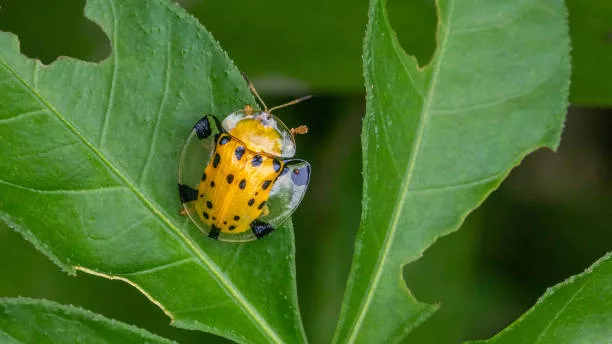
How Beneficial Insects Work:
Beneficial insects are nature’s own pest control squad. They help keep pest populations in check by preying on or parasitizing harmful insects. Here are some examples of beneficial insects and the pests they target:
1. Ladybugs: Ladybugs are voracious aphid eaters. They can consume hundreds of aphids in a single day, making them valuable allies for gardeners.
2. Lacewings: Lacewing larvae are ferocious predators of aphids, mealybugs, and other soft-bodied insects.
3. Praying Mantises: Praying mantises are skilled hunters and will feed on a variety of garden pests, including flies, crickets, and caterpillars.
4. Parasitic Wasps: These tiny wasps lay their eggs inside the bodies of pests, such as caterpillars or aphids, eventually killing them.
5. Hoverflies: Hoverfly larvae consume aphids, thrips, and other small insects.
How to Attract and Support Beneficial Insects:
To encourage beneficial insects to inhabit your garden, follow these steps:
1. Plant Diversity: Create a diverse garden with a variety of flowers, herbs, and plants. Different beneficial insects are attracted to different types of flowers, so a mix of colors and shapes is ideal.
2. Native Plants: Include native plants in your garden, as they often attract local beneficial insects. Native plants provide a familiar habitat for these insects.
3. Avoid Pesticides: Limit or eliminate the use of chemical pesticides, as they can harm beneficial insects along with pests.
4. Provide Shelter: Beneficial insects need places to shelter, hide, and lay their eggs. Provide plant debris, dead wood, or dedicated insect hotels for them to use.
5. Water Source: A shallow water source, such as a small pond or a birdbath with stones for perching, can attract beneficial insects that need water.
6. Time Planting: Plan your garden to ensure there are nectar and pollen sources available throughout the growing season, so beneficial insects have a reason to stick around.
7. Introduce Beneficial: In some cases, you may purchase and release beneficial insects into your garden. This is particularly useful if you’re dealing with a specific pest problem.
Harnessing the power of beneficial insects is a natural and environmentally friendly way to protect your crops from pests. By creating a welcoming habitat for these garden allies, you’ll not only reduce the need for chemical pesticides but also promote a healthier and more balanced ecosystem in your garden. So, invite these “good bugs” into your garden and let them do the pest control work for you. Happy gardening!
4. Neem Oil
Neem oil is a natural and eco-friendly pesticide derived from the seeds of the neem tree (Azadirachta indica), which is native to India and other parts of South Asia. Neem oil has been used for centuries for its powerful insecticidal and fungicidal properties. It’s safe for humans, animals, and beneficial insects, making it an excellent choice for organic and sustainable pest control. Here’s a closer look at how neem oil works and how to use it effectively in your crop protection efforts:

How Neem Oil Works:
Neem oil contains several active compounds that make it an effective pest control solution:
1. Azadirachtin: This is the primary active ingredient in neem oil and is responsible for its insecticidal properties. Azadirachtin disrupts the feeding and reproductive processes of a wide range of insects, including aphids, beetles, caterpillars, and more.
2. Nimbin: Nimbin acts as a natural insect repellent, deterring pests from feeding on treated plants.
3. Salannin and Meliantriol: These compounds have antifeedant properties, making plants treated with neem oil less appealing to pests.
4. Fungicidal Properties: Neem oil also has antifungal properties, which can help combat common plant diseases like powdery mildew and rust.
How to Use Neem Oil for Crop Protection:
Using neem oil effectively in your garden involves a few key steps:
1. Dilution: Neem oil is highly concentrated, so it must be diluted before use. Mix it according to the instructions on the product label. Typically, a 2% neem oil solution (2 tablespoons of neem oil per gallon of water) is effective for most applications.
2. Application: Neem oil can be applied using a sprayer. Make sure to thoroughly coat the foliage, including the tops and bottoms of leaves, where pests often hide. Be sure to spray during cooler parts of the day, as direct sunlight can cause the oil to evaporate quickly.
3. Frequency: For best results, apply neem oil at regular intervals, especially if you’re dealing with a persistent pest problem. Weekly applications are often recommended.
4. Safety: Neem oil is generally safe for humans, pets, and beneficial insects when used as directed. However, it’s a good practice to avoid spraying during flowering, as it may affect pollinators.
5. Consistency: Be consistent with your neem oil applications. It may take some time to see the full effects on pest populations, so patience is key.
6. Storage: Store neem oil in a cool, dark place, away from direct sunlight, as it can break down when exposed to light and heat.
Neem oil is a valuable tool in your arsenal of eco-friendly pest control methods. Its natural properties make it an excellent choice for protecting your crops from a variety of pests and diseases. When used correctly, neem oil can help you maintain healthy and thriving plants while minimizing the use of harmful chemical pesticides. Happy gardening!
5. Row Covers
Row covers are lightweight, breathable fabrics that act as physical barriers to protect your crops from flying and crawling pests. These covers provide a simple and eco-friendly way to shield your plants while allowing sunlight, air, and moisture to reach them. Here’s a closer look at how row covers work and how to use them effectively in your garden:
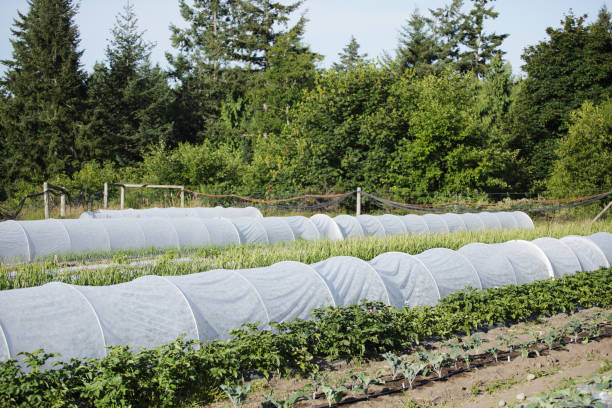
How Row Covers Work:
Row covers are designed to create a protective barrier around your crops, preventing pests from directly accessing your plants. Here’s how they work:
1. Pest Exclusion: Row covers are made of materials that are fine enough to keep out pests like insects, birds, and even some small mammals. They act as a physical barrier that blocks access to your plants.
2. Air and Light Penetration: Row covers are typically made from lightweight materials like floating row cover fabric or spun-bonded polypropylene. These materials allow air, light, and moisture to pass through, ensuring your plants continue to receive the necessary elements for growth.
3. Temperature Regulation: Row covers can also help regulate temperature, creating a microclimate that is slightly warmer than the surrounding environment. This can be particularly beneficial for extending the growing season and protecting sensitive plants from frost.
How to Use Row Covers for Crop Protection:
Using row covers effectively in your garden involves a few key steps:
1. Select the Right Type: Choose the appropriate type of row cover for your crops and specific needs. Floating row covers are ideal for protecting against insects, while heavier covers can provide frost protection.
2. Secure the Edges: Anchor the edges of the row cover to the ground or secure them with weights or garden staples to prevent pests from crawling underneath.
3. Maintain Tension: Ensure that the row cover is taut and doesn’t sag onto the plants. You can use hoops or wire supports to keep the cover elevated.
4. Regular Inspection: Periodically check your crops under the row covers to monitor for any signs of pests or diseases. Lift the covers when needed for pollination or watering.
5. Remove During Pollination: If you’re growing crops that require pollination, like many fruits and vegetables, be sure to temporarily remove the row covers when flowers are in bloom to allow pollinators access.
6. Storage: Properly store your row covers when not in use to extend their lifespan. Clean and fold them neatly to avoid damage.
Benefits of Row Covers:
- Effective Pest Control: Row covers provide excellent protection against insects and birds, reducing the need for chemical pesticides.
- Frost Protection: They can help prevent frost damage and extend the growing season.
- Minimal Environmental Impact: Row covers are a sustainable and eco-friendly pest control method.
- Versatility: They can be used on various crops and are especially useful for delicate or young plants.
Row covers are a valuable tool in your efforts to protect your crops from pests and adverse weather conditions. They offer a non-toxic and environmentally friendly way to safeguard your plants while allowing them to thrive. When used correctly, row covers can be an essential component of your garden management strategy. Happy gardening!
6. Homemade Pest Sprays
Homemade pest sprays are a natural and cost-effective way to keep pests at bay without resorting to chemical pesticides. By creating your own pest-repelling concoctions using common household ingredients, you can protect your crops while minimizing harm to the environment. Here’s a closer look at how homemade pest sprays work and some simple recipes you can try:

How Homemade Pest Sprays Work:
Homemade pest sprays work by using the natural properties of certain ingredients to repel or deter common garden pests. These sprays can affect pests in various ways, including:
1. Scent Repellent: Many homemade sprays emit strong scents that pests find unpleasant, causing them to avoid treated plants.
2. Taste Deterrent: Some sprays can make plants taste unappealing to pests, discouraging feeding.
3. Physical Barrier: Sprays can create a physical barrier on plant surfaces that makes it difficult for pests to land or cling.
4. Disruption of Pests: Certain ingredients in homemade sprays can disrupt the feeding or reproductive processes of pests.
Homemade Pest Spray Recipes:
1. Garlic and Chili Pepper Spray:
- Ingredients:
- 10 cloves of garlic
- 2 hot chili peppers
- 1 quart of water
- 1 teaspoon of liquid dish soap
Instructions:
- Crush the garlic cloves and chili peppers.
- Mix them with the water and let the mixture steep overnight.
- Strain the mixture, add the liquid dish soap, and transfer it to a spray bottle.
- Spray the mixture on your plants, paying attention to the leaves and stems where pests are present.
2. Neem Oil Spray:
- Ingredients:
- 1-2 tablespoons of neem oil
- 1 quart of warm water
- 1 teaspoon of liquid dish soap
Instructions:
- Mix the neem oil and warm water together.
- Add the liquid dish soap and mix thoroughly.
- Transfer the solution to a spray bottle.
- Spray your plants, making sure to cover both the tops and bottoms of leaves.
3. Soap and Water Spray:
- Ingredients:
- 1 tablespoon of liquid dish soap
- 1 quart of water
Instructions:
- Mix the liquid dish soap and water together.
- Transfer the solution to a spray bottle.
- Spray the mixture on your plants to suffocate soft-bodied pests like aphids and mites.
Tips for Using Homemade Pest Sprays:
- Test a small area of your plants before applying any homemade spray to ensure they don’t have adverse reactions.
- Apply the spray in the early morning or late evening when the weather is cooler to avoid damaging plant leaves.
- Reapply the spray after rain or heavy watering, as it may wash away.
Homemade pest sprays offer an eco-friendly and affordable way to protect your crops from pests. These simple recipes can be effective at deterring common garden invaders and helping your plants thrive without resorting to chemical pesticides. Experiment with these natural solutions to find the best fit for your garden. Happy gardening!
7. Traps and Barriers
Traps and barriers are physical tools that help you manage and control pests in your garden. These methods work by either capturing pests or creating obstacles to prevent them from reaching your valuable crops. Here’s a closer look at how traps and barriers work, and some common types you can use effectively:
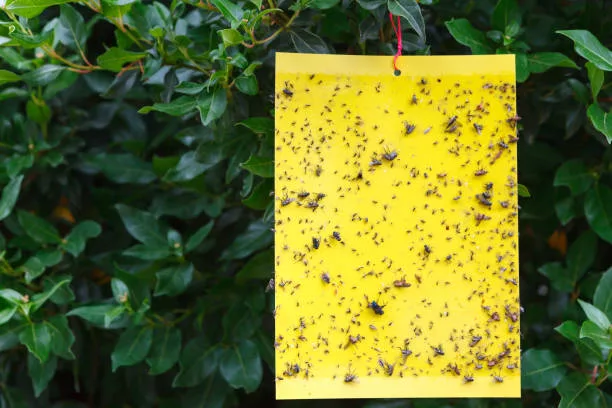
How Traps and Barriers Work:
Traps and barriers are essential tools in integrated pest management. They function in various ways:
1. Pest Capture: Traps are designed to attract and capture pests. They can be used for monitoring pest populations or reducing their numbers.
2. Physical Obstacle: Barriers create a physical obstacle that pests cannot easily cross or penetrate, keeping them away from your crops.
3. Visual and Scent Attraction: Some traps use visual cues or pheromones to attract specific pests.
Common Types of Traps and Barriers:
1. Sticky Traps: Sticky traps are coated with a sticky substance that captures flying insects, such as whiteflies, aphids, and fruit flies. They can be hung in the garden or placed near infested plants.
2. Pheromone Traps: Pheromone traps use synthetic versions of insect pheromones to attract and trap specific pests like moths, beetles, and weevils. These traps are excellent for monitoring pest populations.
3. Tanglefoot Barrier: Tanglefoot is a sticky substance applied to tree trunks or other surfaces to create a barrier that prevents crawling insects like ants, caterpillars, and cankerworms from reaching the foliage.
4. Row Covers: As mentioned earlier, row covers are not only barriers against flying pests but also serve as physical barriers against crawling insects like caterpillars and beetles. They also offer protection against birds.
5. Fence and Netting: Fencing and netting can be used to create physical barriers around your garden to keep out larger pests like deer, rabbits, and birds. Bird netting, for example, is effective for protecting fruit trees.
6. Collars and Collapsible Cones: Collars made of cardboard or plastic can be placed around young seedlings to protect them from cutworms and other ground-dwelling pests. Collapsible cones can also deter pests from climbing plants.
Tips for Using Traps and Barriers:
- Place traps or barriers early in the season to catch pests before they become a problem.
- Regularly inspect and clean traps to maintain their effectiveness.
- Combine traps and barriers with other pest management methods for comprehensive pest control.
- Be patient; traps and barriers may take time to show results.
Traps and barriers are valuable tools in your arsenal for protecting your crops from pests. They offer environmentally friendly and targeted pest control solutions, reducing the need for chemical pesticides. By using these methods strategically in your garden, you can effectively manage and minimize pest damage while promoting a healthy and thriving crop. Happy gardening!
8. Hand-Picking
Hand-picking, also known as manual pest control, is one of the oldest and most straightforward methods for managing pests in your garden. This hands-on approach involves physically removing pests from your plants. While it may seem labor-intensive, it’s an effective and environmentally friendly way to protect your crops without the use of chemicals. Here’s a closer look at how hand-picking works and some tips for success:
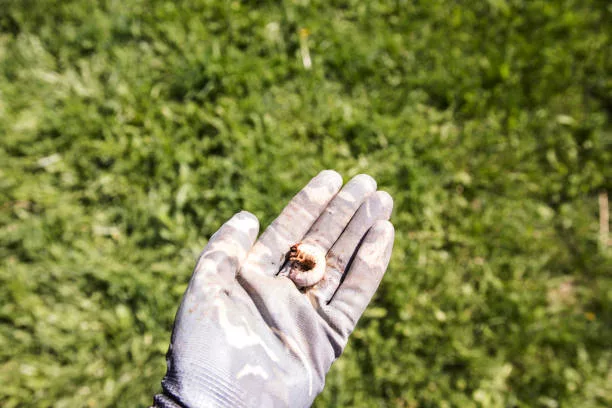
How Hand-Picking Works:
Hand-picking involves inspecting your plants regularly and physically removing pests, such as insects, caterpillars, snails, and slugs, by hand. Here’s how it works:
1. Regular Inspection: Visit your garden regularly, preferably in the morning or evening when pests are most active.
2. Identify Pests: Look for signs of pest damage, including chewed leaves, holes, discolored foliage, or the presence of pests themselves.
3. Pick and Dispose: Using your fingers or a pair of gardening gloves, carefully pick off the pests and either squish them, drop them into a container of soapy water, or relocate them away from your garden.
4. Repeat: Continue this process as needed, especially during peak pest seasons.
Tips for Successful Hand-Picking:
1. Be Thorough: Inspect both the upper and lower surfaces of leaves, as well as the stems and undersides of plant parts where pests often hide.
2. Early Intervention: Catching and removing pests early is essential. Pests can multiply quickly, so regular monitoring is crucial.
3. Timing: Hand-pick pests in the early morning or late evening when they are more active and easier to spot.
4. Encourage Natural Predators: Attract beneficial insects like ladybugs, lacewings, and birds to your garden to help with pest control.
5. Create Barriers: Use physical barriers like row covers or netting to keep larger pests like birds or rabbits away from your plants.
6. Companion Planting: Plant companion plants that deter pests, making it less likely for them to infest your crops in the first place.
7. Stay Consistent: Make hand-picking pests a routine part of your garden maintenance to keep populations in check.
Benefits of Hand-Picking:
- Environmentally Friendly: Hand-picking is entirely chemical-free and doesn’t harm beneficial insects or the ecosystem.
- Targeted Control: You can focus on specific areas or plants that are affected, reducing the need for broad-spectrum treatments.
- Cost-Effective: It requires minimal equipment or investment, making it a budget-friendly pest control method.
- Safe for Edibles: Hand-picking is suitable for edible crops since it leaves no chemical residues.
Hand-picking pests from your garden is a practical and effective method for protecting your crops, especially for small-scale gardening. While it may require some time and effort, it offers a safe and environmentally friendly way to manage pest infestations and ensure a healthy harvest. Happy gardening, and happy hand-picking!
9. Organic Mulch
Organic mulch is not only beneficial for moisture retention and weed control, but it can also play a role in pest prevention. By covering the soil around your plants with organic materials, you create a physical barrier that deters pests and can disrupt their life cycles. Here’s a closer look at how organic mulch works and how to use it effectively in your garden:
How Organic Mulch Works for Pest Prevention:
Organic mulch can help protect your crops from pests in several ways:
1. Pest Disruption: Organic mulch can make it more challenging for pests like slugs, snails, and some insects to move across the soil. This can deter them from reaching your plants.
2. Habitat Disruption: Mulch can create an inhospitable environment for pests by reducing moisture levels and hiding spots. Many pests prefer cool, damp conditions.
3. Weed Suppression: By preventing weeds from growing, organic mulch eliminates potential shelter and food sources for pests that may be attracted to weedy areas.
4. Beneficial Insects: Organic mulch can provide shelter and habitat for beneficial insects like ground beetles and spiders that prey on garden pests.
How to Use Organic Mulch for Pest Prevention:
To effectively use organic mulch for pest prevention in your garden, follow these steps:
1. Choose the Right Mulch Material: Opt for organic mulch materials such as straw, hay, leaves, wood chips, or compost. Avoid using materials that may introduce pests or diseases.
2. Apply Mulch Correctly: Spread a layer of mulch around the base of your plants, leaving a gap near the stems to prevent moisture from accumulating against them. Mulch should be a few inches thick.
3. Maintain Mulch: Regularly inspect your mulch for signs of pests or diseases. Replace mulch if it becomes moldy or infested.
4. Remove Hiding Spots: Keep the area around your garden clean and remove any debris or clutter that could provide hiding spots for pests.
5. Monitor for Pests: Continue to monitor your plants for signs of pest activity and take action if you notice any issues.
Benefits of Organic Mulch:
- Moisture Retention: Organic mulch helps retain soil moisture, reducing stress on your plants during dry periods.
- Weed Control: It suppresses weed growth, reducing competition for resources.
- Soil Health: As organic mulch breaks down, it adds valuable organic matter to the soil, improving its fertility and structure.
- Temperature Regulation: Mulch can help regulate soil temperature, providing a more stable environment for plant roots.
Organic mulch is a versatile and eco-friendly tool for protecting your crops from pests while providing numerous other benefits for your garden. By choosing the right mulch materials and applying them correctly, you can create a healthier and more pest-resistant garden environment. Happy gardening!
10. Regular Maintenance
Regular maintenance of your garden is a fundamental practice that contributes significantly to pest prevention and overall crop health. It involves consistent care, observation, and prompt action to address any issues that may arise in your garden. Here’s a closer look at how regular maintenance works and why it’s crucial for pest control:

How Regular Maintenance Works for Pest Prevention:
Regular maintenance is an ongoing process that involves several key elements for pest prevention:
1. Monitoring: Consistently inspect your plants for signs of pests, disease, or stress. Regular monitoring allows you to detect problems early when they are easier to manage.
2. Weeding: Regularly remove weeds from your garden beds. Weeds can serve as hiding spots and hosts for pests. By eliminating them, you reduce potential pest habitats.
3. Pruning and Deadheading: Prune away damaged or diseased plant parts promptly. Removing these areas can prevent pests from finding an entry point or a breeding ground.
4. Soil Health: Maintain healthy soil by adding organic matter, adjusting pH levels, and ensuring proper nutrient levels. Healthy plants are more resistant to pests.
5. Irrigation: Consistent and appropriate watering practices can prevent stress on your plants, making them less susceptible to pests and diseases.
6. Crop Rotation: If applicable, continue to follow crop rotation practices to prevent the buildup of pests and diseases in the soil.
7. Cleaning: Keep your garden tools, equipment, and containers clean and sanitized. Dirty tools can transfer pests and diseases from one area to another.
8. Beneficial Insects: Encourage beneficial insects by providing a habitat for them in your garden. Regular maintenance includes ensuring they have shelter and resources.
9. Record Keeping: Keep a garden journal to track planting dates, varieties, and any pest or disease issues you encounter. This information can help you make informed decisions in subsequent seasons.
Why Regular Maintenance Is Crucial:
Regular maintenance is a critical component of pest prevention and successful gardening for several reasons:
1. Early Detection: Regular inspections allow you to spot pest problems or plant diseases at their onset when they are most manageable.
2. Preventative Measures: By consistently implementing healthy gardening practices, you create an environment that is less conducive to pest infestations.
3. Timely Intervention: When issues arise, you can take prompt action, such as hand-picking pests, applying organic sprays, or adjusting irrigation, to address the problem before it escalates.
4. Improved Plant Health: Regular maintenance practices, like pruning and soil amendment, promote strong and healthy plants that can better resist pests and diseases.
5. Sustainability: Regular maintenance aligns with sustainable gardening practices by reducing the need for chemical pesticides and promoting a balanced ecosystem.
Regular maintenance is the cornerstone of effective pest prevention and successful gardening. By dedicating time and effort to consistently care for your garden, you create a resilient and thriving environment for your crops. When combined with other pest management methods discussed in this series, you’ll be well-equipped to protect your crops from pests and enjoy a bountiful harvest. Happy gardening, and may your crops flourish!
In conclusion, protecting your crops from hungry pests doesn’t have to involve harmful chemicals or expensive solutions. By implementing these 10 effective and eco-friendly methods, you can safeguard your harvest while promoting a sustainable and healthy environment for your plants and the ecosystem as a whole. Happy farming!
Remember, the key to successful crop protection is vigilance and a proactive approach. By integrating these methods into your farming practices, you’ll be well on your way to a pest-free and abundant harvest season. Happy and sustainable farming!
READ, ALSO>>>>>>Discover the effective strategies and practices for sustainable pest control in agriculture.





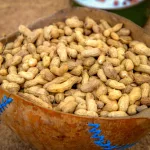


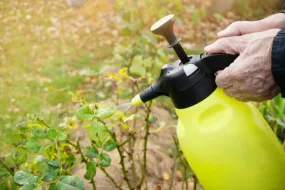
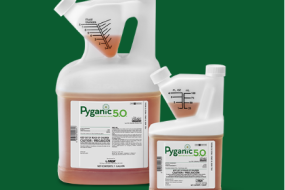

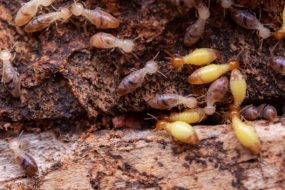
One reply on “What Are The 10 Effective Ways to Protect Your Crops from Hungry Pests And Animals?”
[…] READ, ALSO >>>>>> What Are The 10 Effective Ways to Protect Your Crops from Hungry Pests And Animals? […]